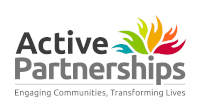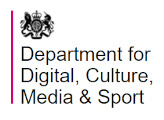Welcome to Active Black Country's Insight Hub
This interactive resource describes and defines an urban active environment, and shows the connectivity between the place, stakeholders and the opportunities to get people active. The design and layout of open space is important to increasing physical activity and play. Zoom in and click on the different features to see how the space around us and the people we interact with can impact on our activity levels. Please click here to view the text-only accessible version.
Please wait while the interactive map loads...
GP Surgeries & Health Centres
A GP Surgery or Health Centre is a community facility regarded as a safe space by the local population, somewhere that they can receive advice from a source that they trust. This is a place people digest messages regarding their health and wellbeing and whether via a GP, health coach, social prescribing link worker or through the literature or TV screens in waiting rooms, it’s crucial that the health benefits of physical activity are being discussed and presented as a positive option for both the prevention and treatment of certain conditions. Effectively reaching the most inactive people and tackling inactivity requires a system-wide approach that engages and upskills community touchpoints, influencers and trusted sources of information.
Active Black Country have been working across the STP footprint to develop awareness of physical activity as a referral opportunity for good general health and for both the prevention and treatment of certain conditions.
Learning: Awareness of CMO Activity Recommendations Amongst Healthcare Professionals
Community Centres
To effectively tackle inactivity, we need to understand where people feel comfortable and safe being active. Many people don’t consider a leisure centre to be the type of place that ‘people like them’ would go to, therefore an approach that embraces asset-based community development is fundamental to ensuring we have spaces that are accessible, welcoming and fit-for-purpose.
Active Black Country are committed to working with organisations who deliver physical activity and wellbeing services to local communities. We are currently working across 8 priority wards to better understand the needs of residents in our most deprived localities and the support of our community partners is essential in reaching inactive people.
Faith Centres
The task of tackling inactivity extends beyond the traditional sports sector. To effectively reach underrepresented groups we need to engage with community touchpoints, influencers who are regarded as trusted sources of information by local residents. As such, faith centres are community facilities with a crucial role to play in tackling inactivity. They are influential and trusted sources of information, often with physical spaces that can be used for activity or hubs around which activity can take place. Similarly, Faith Leaders are an excellent example of individuals who are in a position to cascade positive messages regarding physical activity and care deeply about the health and wellbeing of their congregation.
Active Black Country are working closely with faith-based organisations across the region to develop their health and wellbeing offers. Via consultation and a series of pilot activities, learnings are currently being developed regarding the potential of faith centres to reach the most inactive disabled and non-disabled people in Wolverhampton as part of the Activity Alliance funded Get Out Get Active (GOGA) programme.
Educational Establishments
Educational establishments, from early years setting to Primary Schools, Secondary Schools, Further Education and Higher Education, have a fundamental role to play in enabling our children and young people to develop a physical activity habit for life. Active Black Country work closely with schools to provide appropriate support around traditional PE as well as building activity into other lessons. We are responsible for delivering a comprehensive school games programme along with a well-established leadership programme that develops the next generation of volunteers. Strategically, we provide advice and guidance to primary schools regarding options for how they use PE and Sport Premium funding and we carefully monitor the data they produce in relation to swimming attainment and water safety to better understand the opportunities that children have to be active during school hours.
But these establishments aren’t just places of education. They are also community facilities that many people feel more comfortable going to than a local leisure centre. Active Black Country are working on a project to actively encourage more schools to open their facilities for community use. The learnings from a series of pilot schemes will be available on the insight hub.
ABC Insight: Primary School Swimming in the Black Country
ABC Insight: Black Country Primary PE and Sport Premium Mapping
Parks and Open Spaces
Whilst the Black Country is an urban area, we have a plethora of parks and open spaces where people can be active, either informally or as part of organised activity sessions such as Parkrun.
A survey into activity habits of Black Country residents during the lockdown of 2020 found that 4 in 10 people went to their local park for exercise with a further 2 in 10 using the local countryside. Work is underway to develop tools that help Black Country residents find and explore these assets in ways that are both healthy and enjoyable.
ABC Insight: Covid19 Impact on Activity Habits of Black Country Residents
Leisure Centres
The first place most people will think of when you ask them where they can go to be active is the nearest leisure centre. However, for many inactive people, it’s the last place they’d ever think of going due to a perception that leisure centres aren’t for people like them, staffed by people who don’t understand their needs, are too expensive or are generally inaccessible.
All 4 Local Authorities in the Black Country have excellent, accessible leisure facilities. These are welcoming environments, however some parts of the population will never set foot inside them. A big part of behaviour change is perception change and by demonstrating to underrepresented groups that ‘people like you’ use the facilities, we can start to utilise the single most referenced means by which people hear of interventions; word of mouth.
New Housing Developments
Whilst a proportion of the population will always be active, and will go to the gym, cycle or run on a regular basis, a significant amount of people in the Black Country struggle to find ways to build activity into their daily routines. We can help them by engineering the environments and built up areas in which people live and work using the principles of active design to increase levels of incidental activity – the things we do, albeit not deliberately, that increase our heart rate and benefit our physical wellbeing.
The Canal Network
Part of our proud heritage and industrial past, the extensive Black Country canal network now plays a crucial role in the ongoing regeneration of the region, with canal-side housing and guided tours proving to be popular features. They’re also fantastic places to be active, with commuters using these corridors to cycle to work and many people enjoying them for recreational walks. A survey into activity habits of Black Country residents during the lockdown of 2020 found that canals were one of the most preferred destinations for physical activity for people living in deprived areas.
In recent years, Transport for West Midlands have invested in improving canal towpaths in the Black Country and more and more people are now utilising these corridors for active travel.
Learning: Active Travel for LSEG Communities
ABC Insight: Covid19 Impact on Activity Habits of Black Country Residents
The Local Authority
The Local Authority is a critical part of the physical activity system and the individuals who work there are key links between policies and the community. The physical activity services provided by local authorities through public health or other departments can help people live longer, healthier and happier lives.
However, the impact of local authorities on physical activity is wider than just public health. Decisions made around transport, housing, planning and education can all influence the levels of incidental activity – i.e. the activity we do as part of our daily routines.
The Metro
The West Midlands Metro is being extended further into the Black Country, with the construction of a line from Wednesbury into Brierley Hill that will travel through Dudley town centre. The project will include extensive consultation with local residents to ascertain how active travel can be incorporated into the extension with a view to developing an integrated transport network that enables journeys to be carried out using a combination of walking, cycling and motorised travel. Post-coronavirus, we now have a real opportunity to deliver a modal shift in the way people travel.
The Road Network
One obvious immediate area of focus is how people ‘get around’, how we are designing our local places, integrating and locating services and places people live, work, learn, socialise and play.
A significant focus of this has to be the creation of Active Environments and specifically increasing active travel opportunities to local services and facilities, especially walking and cycling. Our roads, canal networks, parks and open spaces can all play a role in connecting people. Connecting to public transport or local leisure opportunities and ensuring local facilities and services are easily accessible by bike are all important facets of keeping people moving.
The transport network is also a place where people feel comfortable being active. Active Black Country’s survey into the impact of Covid-19 on activity habits showed that the majority of residents chose to be active in and around the local streets during the lockdown.
Being Sedentary
Too many of us are inactive, and the drivers of sedentary behaviour are complex and nuanced. Whilst inactivity trends broadly follow patterns of deprivation at a population level, at a personal level the lifestyle choices people make are influenced by a myriad of external factors that previous approaches have failed to address, leading to the most isolated and vulnerable members of our communities being underrepresented in the physical activity system.
Active Black Country have adopted a place based approach, working across 8 priority wards to better understand the needs of residents in our most deprived localities, establishing what works, what doesn’t work and what can be applied elsewhere to improve the health and wellbeing of people who live, work and play here.
Learning: Wider Determinants of Child Inactivity
ABC Insight: Covid19 Impact on Activity Habits of Black Country Residents
Runners/Joggers
Running is still one of the best ways to get active. There are now fantastic apps, such as Couch to 5K, that help complete beginners get moving and build up their stamina in a gradual and seamless way. It’s also a great opportunity to explore parts of your local area and greenspace that you might not have been too familiar with previously.
ABC Insight: Covid19 Impact on Activity Habits of Black Country Residents
Walking
Enabling the development of active environments, where people feel safe and able to move more on foot for leisure or travel is a long-term project that can deliver lasting rewards. The Chief Medical Officer recommends that adults and older adults should be active for 150 minutes per week (at moderate intensity) whilst children and young people (CYP) should be active for 60 minutes per day. This is how we define an Active person.
For a number of complex reasons, not enough people living in the Black Country currently hit these marks. Encouraging and enabling activity requires clear communication of the opportunities to be active and a wider understanding across the workforce and amongst community touchpoints of the recommended activity levels so 150 minutes per week becomes as prevalent a message as 5 fruit and veg per day.
ABC Insight: Covid19 Impact on Activity Habits of Black Country Residents
The Police
Understanding the factors behind what makes people feel safe in certain places is an important part of developing insight around inactivity. Studies have demonstrated that people feeling safe from crime are 27% more likely to be active. The police, and their community presence, are therefore a vital part of the physical activity system and, alongside broader issues such as street lighting, help to manage people’s fear of crime and support active environments.
Working in partnership with the West Midlands Police Crime Commissioner’s Violence Reduction Unit, Active Black Country have mobilised a collection of locally trusted Community Sports providers to establish a Community Safety Partnership to utilise sport and physical activity as a vehicle for diversionary activity, providing us with important learnings and knowledge regarding what builds retention amongst young people.
Learning: West Midlands Police Crime Commissioner – Violent Crime Reduction Unit
Cycling
An effective, functioning physical activity system enables and encourages the ability to make short journeys by bike, encompassing a supply of vehicles that are inclusive, a training programme that ensures all residents are able and confident riders and an integrated transport system that recognises cycling as a key component.
ABC are working closely with public health partners and TfWM to provide an inclusive active travel offer across the Black Country As we adjust our routines in light of coronavirus, there has never been a better time to reconsider how we make our journeys. However, whilst it’s generally accepted that active travel is the healthy and environmentally friendly option, our research confirms that there are still real barriers to cycling, particularly amongst lower socio-economic groups.
Data: Covid19 Impact on Activity Habits of Black Country Residents
Libraries
Understanding the places that people go where they feel safe is crucial to tackling inactivity. Libraries are trusted sources of information amongst the community and are facilities where local residents can obtain details about local initiatives, opportunities to meet new or like-minded people and programmes to improve their health and wellbeing.
Fire Stations
Whilst the fire brigade has a clear role to play in keeping us safe, they are also well placed to deliver messages around how to get and stay healthy as part of their wider community programmes. West Midlands Fire Service have a strong education programme aimed at young people that reaches out to local schools and youth services, including those who have displayed challenging behaviour, to teach general safety and vital life skills. Understanding the local conduits to deliver positive messages around activity and healthy lifestyles is critical to tackling inactivity.
Learning: West Midlands Police Crime Commissioner – Violent Crime Reduction Unit
Sports Clubs
A vital part of our sector, community sports clubs operate across the Black Country providing opportunities for people of all ages to be active in competitive and non-competitive environments across a range of sports. The ABC Satellite Clubs programme invests in clubs in areas of greatest need, such as identified areas of deprivation – 62% of the clubs we fund are located in the 20% most deprived parts of the country. These clubs are fantastic routes into community sport for young people in underrepresented groups (42.5% of clubs focus on lower socio-economic groups).
The Workplace
How conducive are our working patterns and working environments to being active? How often do we take the stairs instead of the lift, or carry out meetings standing up, or whilst walking? Whilst for some working in the Black Country, particularly those employed in industrial settings, being active is part of the job, for others the days are mostly spent sitting at desks. It’s important to remember that small blocks of movement count towards a daily aggregated total and there are lots of opportunities to build small amounts of low intensity physical activity into the working day.
National Insight: Health Knowledge, Employee Wellbeing Programmes and Incentives
Care Homes
Keeping active is crucial to a staying as healthy as possible in older age. Many care homes have dedicated coordinators that provide residents with a range of activity opportunities that are both physically and mentally stimulating.
During the lockdown that resulted from the coronavirus pandemic, many care home residents were confined to their rooms for extended periods of time. Active Black Country trialled the distribution of activity packs, consisting of TheraBand and other equipment and guidance to give older people the opportunity to do low impact exercise within their own quarters. An evaluation of the scheme is ongoing and information will be uploaded to the Insight hub in due course.
Civic Space
Pedestrianised civic space is a powerful tool for both combating inactivity and improving general health and wellbeing. Car-free spaces are also good for the environment. The rise in private car ownership and decline of public transport over the second half of the twentieth century has led to an air pollution crisis in most major cities around the world and 91% of the global population live in places that exceed WHO’s air pollution exceeds its guideline limits. Shifting perceptions about the necessity of car use is key as many local governments will face resistance to pedestrianisation.
Inclusive Activity
Everyone has the right to a physical activity habit for life, regardless of age, gender, ethnicity, socio-economic status or disability. However, disabled adults are twice as likely as non-disabled adults to be physically inactive, despite four in five stating that they’d like to be more active. It’s imperative that we ensure disabled and non-disabled people have the same opportunities by working with local and national partners to develop a truly inclusive offer.
Active Black Country are part Get Out, Get Active, an exciting programme that looks to develop opportunities for disabled and non-disabled people to be active together. As part of this project, we’re exploring the potential of Faith Centres in Wolverhampton to reach the most inactive disabled and non-disabled people.
National Insight - Annual Disability and Activity Survey













